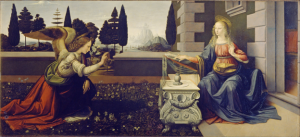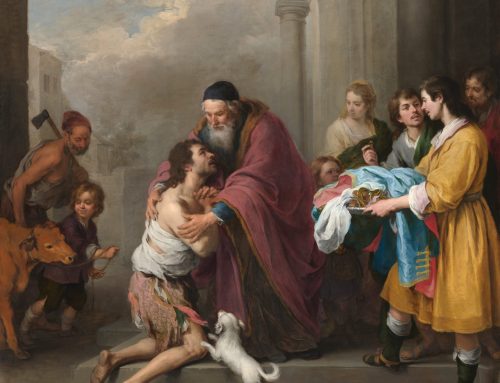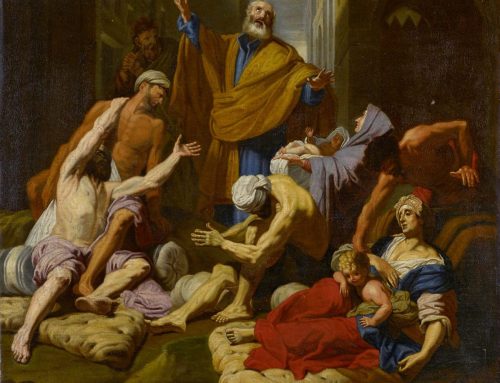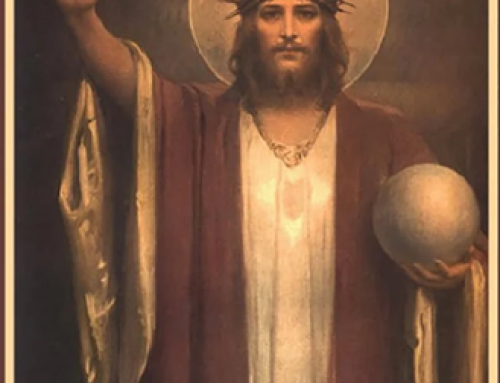
In 431 AD the Council of Ephesus dogmatically defined Mary to be the Theotokos, or God-bearer. What does that mean? As is the case with all Catholic doctrine, it means Catholics must assent to the Dogma of Mary, Mother of God.
How can we create an argument for the Dogma of Mary, Mother of God?
We can develop the argument for Mary, Mother of God by joining these two principles, the evidence for which is prevalent in Scripture.
1.) Mary is a true mother. She really contributes something to Christ.
2.) The one whom Mary bears is God himself, the 2nd person of the Trinity, the divine person of Jesus, both fully human and fully divine who became flesh at a singular point in history.
Evidence of Mary’s mothership (1.) and Jesus’ divinity (2.) is given in Luke 1:43, the Visitation, which we just read during the 4th Sunday of Advent. St. Matthew also points to both in Matt 1:20-23:
But as he considered this, behold, an angel of the Lord appeared to him in a dream, saying, “Joseph, son of David, do not fear to take Mary your wife, for that which is conceived in her is of the Holy Spirit; she will bear a son, and you shall call his name Jesus, for he will save his people from their sins.” All this took place to fulfil what the Lord had spoken by the prophet: ‘Behold, a virgin shall conceive and bear a son, and his name shall be called Emmanuel (God with us).’
Why define the Dogma of Mary, Mother of God?
There are many errors common to the Dogma of Mary, Mother of God, and they invariably lead to errors regarding Christ. Some people throughout history denied the full humanity of Christ, and thus made Mary not the real mother of Jesus. Valentinus and the Gnostics living in the 2nd century thought matter was bad and spirit was good. Therefore, God would not dare to take on matter in the form of a human body. They thought Christ’s body was a mirage, a projection. In that case, there isn’t a good reason to factor in a mother.
Arius living in the 4th century denied the consubstantial union between the two natures of Christ, the divinity and humanity. Jesus, for Arius and his followers, was a superior creature created by God. It’s hard to believe in Mary as the Mother of God if the one who is conceived is not really God.
Yet others throughout the ages denied Luke 1:31, “behold, thou shalt conceive in thy womb, and bring forth a son.” They denied Mary’s real participation in the birth of Christ. They posited Mary to be something of an incubation chamber, not really contributing anything to Christ. This is also false. Mary contributes to Christ’s human nature. Mary gives Jesus his DNA, his eye color, his skin color, His blood type!
The most famous error regarding this teaching was that of Nestorius who was archbishop of Constantinople in the 5th century. Nestorius believed Jesus to be two persons, divine and human. The divine person was indwelt in the human person. On this heresy, Mary was the source of the human person only, the christotokos, the Christ bearer. The problem here is that Jesus is not two persons. Christ is in fact one person, a divine person, with two natures, fully human and fully divine. The Council of Ephesus was called to defend the orthodox position regarding Christ against the heretic Nestorius.
The Second Vatican Council Fathers write, “The Virgin Mary … is acknowledged and honored as being truly the Mother of God and Mother of the Redeemer. Redeemed by reason of the merits of her son and united to him by a close and indissoluble tie, she is endowed with the high office and dignity of being the Mother of the Son of God…” (Lumen Gentium, 53).
The maternity of Mary guarantees the true humanity of Jesus, and as Mother of the Son of God, Mary also manifests the true divinity of Christ. She always points us to Christ; Mary, the Mother of God leads us into the truth of who Christ is





Leave A Comment